As Mk2 Golfs have risen in value, attention has turned to its generally less loved successor which has now become the most affordable means of owning Wolfsburg’s iconic hatch. With cars changing hands for as little as a few hundred pounds, the third generation Golf makes plenty of sense – as long as you know how to sort the nuggets from the nails. Here’s what to look for…
While the Mk3 Golf is not as much of a driver’s car as either the Mk1 or Mk2, there’s still lots of positives – like the fact that it is a roomy and refined daily that still costs buttons to buy. And while some may feel this Golf has lost its edge there are plenty of ways to tighten up the ride and add a few more horses.
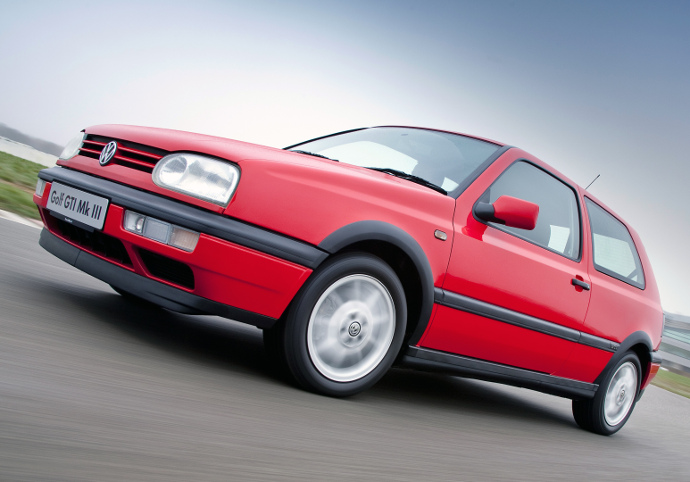
With a reputation for being bombproof, the Mk3 is great to work on at home and what you lose in raw chuckability you gain in terms of safety and overall comfort. The key though, as always, is to buy a good car in the first place so you don’t blow your budget playing catch up with a list of repair jobs in the first few months of ownership.
Engines
One of the best things about the Mk3 is that it came with a far greater choice of engines than either of the early Golfs. Initially there was a poverty-spec 1.4-litre, a slightly more adequate 1.6-litre and also several 1.8s – including the 90bhp Driver. The GTI again came in both 8v and 16v versions, only this time the block has been enlarged to 2.0-litres. With the third generation Golf also came the storming VR6, fitted with a 2.8-litre V6 (2.9-litre from 1994). The Mk3 was even treated to naturally aspirated and turbocharged versions of VW’s 1.9-litre diesel.
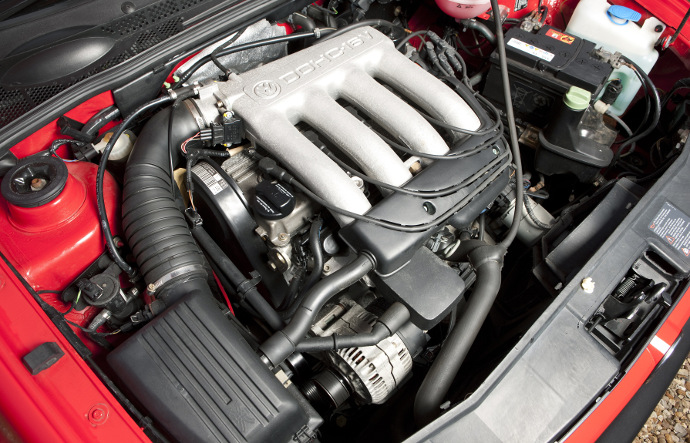
The four-pot petrols should prove strong and reliable if looked after so quiz the owner about maintenance and ask to see the history file. A classic sign of neglect is filler cap mayo, which almost certainly points to head gasket troubles. Being the smallest, the 1.4-litre engine works hardest out of all the four-pots, so it really is crucial here that previous owners have kept on top of servicing. Similarly, you’ll also need to check and find out when the cambelt was last changed.
On the 16v GTI, make sure that it idles smoothly because if it doesn’t the idle stabilisation valve is likely to be at fault.

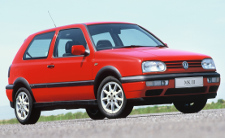
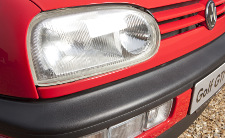
Coil packs go on the VR6s and although the engine has a pair of timing chains rather than a cambelt any rattle should be viewed with suspicion. Splashing out £800 to have them replaced isn’t the best way to begin VR6 ownership. If there’s no history then a tinny noise as you accelerate, which seems to be coming from the driver’s side, means a tensioner is on its way out and it’s time to get both the tensioners and chains replaced.
As for the diesels, make sure you buy one with a blower as the non-turbocharged examples produce a measly 64bhp. Otherwise, problems should be few and far between. Manual gearboxes are fairly reliable, but worn bearings can be an issue on the high milers. Gearboxes fitted to the 16v GTI and the VR6 are a lot hardier than the others, but even on these you’ll need to keep an ear out for any uncharacteristic noises, whines or failing syncro.
Running gear
The suspension struts on these cars usually fail at around 80,000-miles, so some owners may’ve used this as an excuse to uprate them already. That’s all good, as long as they’ve been fitted properly and everything has been re-aligned afterwards. Uneven tyre wear isn’t a good sign. While trying the car, if the tail feels a little too lively around bends then the rear axle bushes could be at fault. It’s a good idea to have all the bushes checked anyway as replacing deteriorated examples will vastly improve handling, making your Mk3 feel tighter and far more willing when it comes to attacking corners.

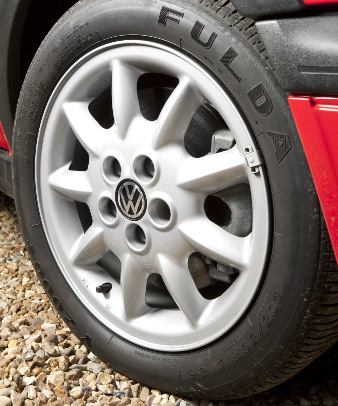
The GTI and VR6 Mk3s were fitted with ABS as standard, although it did come as an option across the entire range. So, if yours is fitted with ABS then check the dash light comes on when the car is started and goes out again a few seconds afterwards.
The tried and tested front discs and rear drums configurations works fine for the standard models, while the more performance-orientated Mk3s (such as the VR6) have all-round disc brakes and are even simpler to maintain. Note though that the earlier VR6 and 16v GTI models with rear discs have the same calipers as the Mk2 Golf and these don’t like either cold weather or being left standing for long periods as the handbrake can seize.
Bodywork
Despite being relatively new by Mk1 Golf standards, don’t be surprised to find rust on a Mk3. Areas to check include the tailgate, the metal around the windscreen and where the front wings meet the sills and the wheelarches – those plastic wheelarch kits are notorious for holding moisture. Under the bonnet, check the battery tray on top of the chassis leg as well as the strut towers. Inside you’ll need to lift the carpets and check the rear floors. It’s quite common to find problems here and be especially picky if you find repairs. Finally, check the doors close properly. Being on the weighty side means hinges can droop causing the entire door assembly to sag.
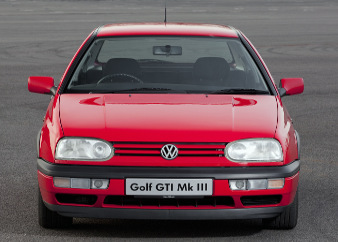
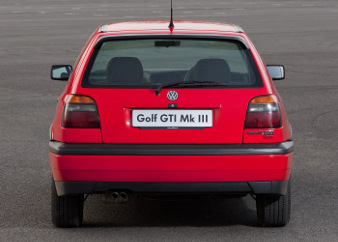
Interior and Electrics
Worn seat side bolsters, shiny steering wheels and bust glovebox hinges are all par for the course inside. Of course leather trim is nice, although it’s worth making sure everything matches. Of more concern inside are the electrics; here make sure the immobiliser is behaving itself, along with the previously mentioned ABS dash light. It’s worth noting the airbags can be a bit temperamental too.

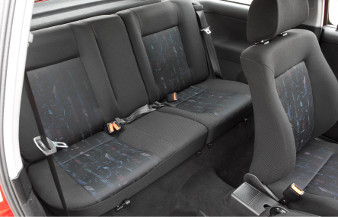
The motors and regulators that look after the electric windows can fail so check that they’re operating as they should. If you’re looking at a Mk3 with a sunroof, check it works and there’s no rust around the opening. Headlamp switches can fail and this is usually down to dirty terminals inside the switch itself. It’s a pain to fix so you might end up replacing them instead.
What to pay
The good news is that Mk3 prices have yet to firm up in the way they have for the Mk1 and more recently the Mk2. Prices start from a few hundred quid, but if you go in at this end of the market be careful you don’t land yourself with a money pit. The majority of non-GTI four-pot petrols fall into sub-£1000 category depending on condition. Naturally there’s a greater demand for the twin-cam GTIs than the 8-valves (so expect to pay slightly more), but paying between £1000 and £1500 seems to be fairly reasonable at the moment for roadworthy, though not perfect, examples. One exception though is the 20th Anniversary GTI – VW only made 750 of these.
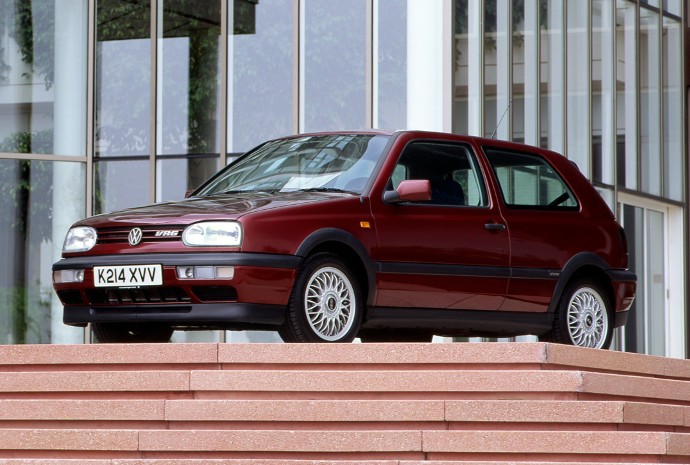
Unsurprisingly, the V6s cost the most. That said, we’ve seen one recently for as little as £1395 in the classifieds. Realistically though you will need upwards of £3000 for a low-mileage example that’s been looked after inside and out. Again, you’ll need to pay considerably more than this if you’re after the top-spec black and mulberry VR6 Highline, although £5,000 should still be enough to bag one of the best.
Ian
The opinions expressed here are the personal opinions of the author and do not necessarily represent the views and opinions of VW Heritage


I have a Golf MK3 GTI 16v, it simply is a great car to work on and upgrade, some parts are or have become obsolete so you have to be inventive to source the parts from other countries.
Since owning my car just over two years, I have repaired all the window regulators, changed the ABS pump, upgraded the interior including door cards and seats, upgraded the suspension and changed the wheels for meaner bad boys, and fitted a full stainless steel myself, so anything is possible!
I would highly recommend getting one as the prices are now raising slowly for sure, as these cars are now getting thin on the ground!
Hi Darren
Thanks for the info. Yes, I think you are right. They are massively undervalued at the moment – but my guess is not for much longer.
From the USA, I have a 2000 cabrio I’m fixing up. The 2.0 SOHC engine is tired so I’m contemplating finding a DOHC. I would also like to know if 16″ factory 4×100 were an option? I swapped out the tall geared trans for a better ratio hwy one already. Shifted the 70mph cruising RPM from 3500 down to 3000.
How much would you pay for a mk3 golf 1995 1.8cl auto .the car is sanded in really good condition full history service and and 12 moths mot and ONLY done 70000 miles
£800 – £1000. Depends how much you really want it.
You can buy a good GTI for £1500, and they tend to command a higher price.
Hello.. i have a MK3 2.0L engine and i wanted to find out if the specs for Polo 1.4L gearbox are the same as for the MK3 gearbox
I have a Mk3 vr6 synchro 2.9l 1995.
I just bought it a few weeks ago but I want to sell it now. It’s in good condition with minor rust spot .
Engine works perfect no leaks. I am in the Caribbean but still would like to have an idea what can it go for.